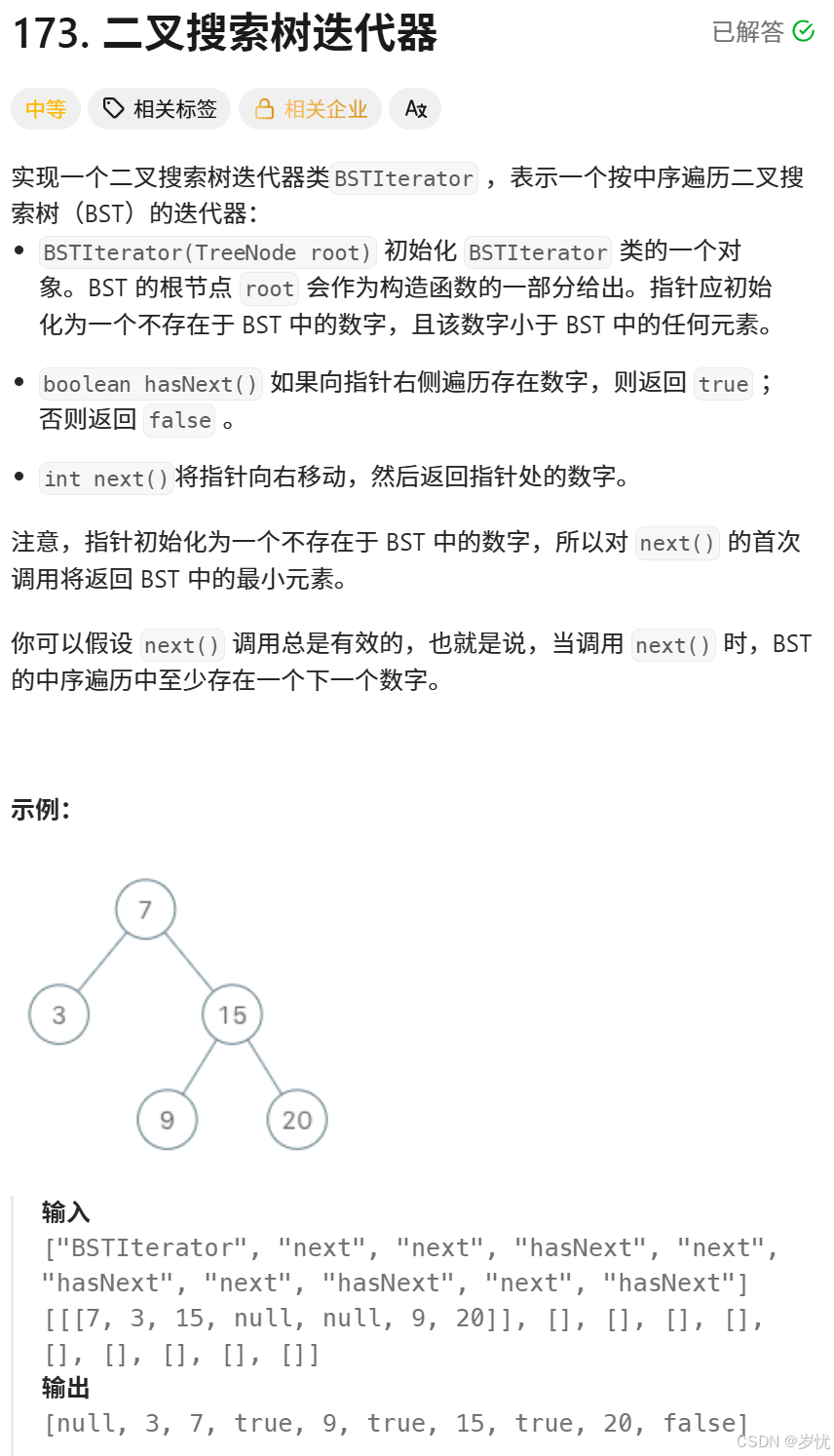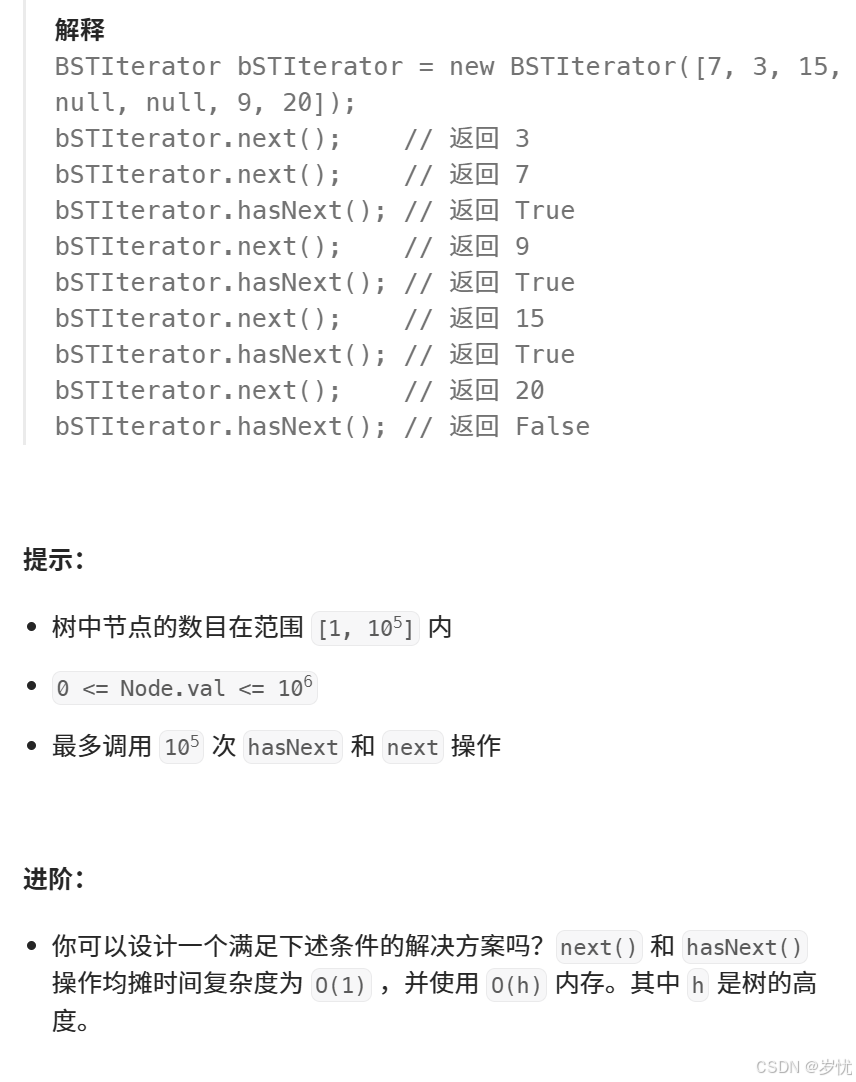题目:173. 二叉搜索树迭代器


思路:栈,时间复杂度0(n)。
C++版本:
cpp
/**
* Definition for a binary tree node.
* struct TreeNode {
* int val;
* TreeNode *left;
* TreeNode *right;
* TreeNode() : val(0), left(nullptr), right(nullptr) {}
* TreeNode(int x) : val(x), left(nullptr), right(nullptr) {}
* TreeNode(int x, TreeNode *left, TreeNode *right) : val(x), left(left), right(right) {}
* };
*/
class BSTIterator {
public:
stack<TreeNode*> st;
TreeNode * tr;
BSTIterator(TreeNode* root) {
tr=root;
}
int next() {
//每次先中序遍历tr
while(tr!=nullptr){
st.push(tr);
tr=tr->left;
}
// 确保当前是中序遍历的第一个节点
tr=st.top();
st.pop();
int tmp=tr->val;
//保留当前节点的右子树,便于下次接着进行中序遍历
tr=tr->right;
return tmp;
}
bool hasNext() {
return tr!=nullptr || st.size()!=0 ;
}
};
/**
* Your BSTIterator object will be instantiated and called as such:
* BSTIterator* obj = new BSTIterator(root);
* int param_1 = obj->next();
* bool param_2 = obj->hasNext();
*/JAVA版本:
java
/**
* Definition for a binary tree node.
* public class TreeNode {
* int val;
* TreeNode left;
* TreeNode right;
* TreeNode() {}
* TreeNode(int val) { this.val = val; }
* TreeNode(int val, TreeNode left, TreeNode right) {
* this.val = val;
* this.left = left;
* this.right = right;
* }
* }
*/
class BSTIterator {
TreeNode tr;
Deque<TreeNode> st;
public BSTIterator(TreeNode root) {
tr=root;
st=new LinkedList<TreeNode>();
}
public int next() {
while(tr!=null){
st.push(tr);
tr=tr.left;
}
tr=st.pop();
int tmp=tr.val;
tr=tr.right;
return tmp;
}
public boolean hasNext() {
return tr!=null || !st.isEmpty() ;
}
}
/**
* Your BSTIterator object will be instantiated and called as such:
* BSTIterator obj = new BSTIterator(root);
* int param_1 = obj.next();
* boolean param_2 = obj.hasNext();
*/GO版本:
go
/**
* Definition for a binary tree node.
* type TreeNode struct {
* Val int
* Left *TreeNode
* Right *TreeNode
* }
*/
type BSTIterator struct {
tr *TreeNode
st []*TreeNode
}
func Constructor(root *TreeNode) BSTIterator {
return BSTIterator{tr:root}
}
func (this *BSTIterator) Next() int {
for this.tr!=nil {
this.st=append(this.st,this.tr)
this.tr=this.tr.Left
}
this.tr=this.st[len(this.st)-1];
this.st=this.st[:len(this.st)-1]
tmp:=this.tr.Val
this.tr=this.tr.Right
return tmp
}
func (this *BSTIterator) HasNext() bool {
return this.tr!=nil || len(this.st)>0
}
/**
* Your BSTIterator object will be instantiated and called as such:
* obj := Constructor(root);
* param_1 := obj.Next();
* param_2 := obj.HasNext();
*/